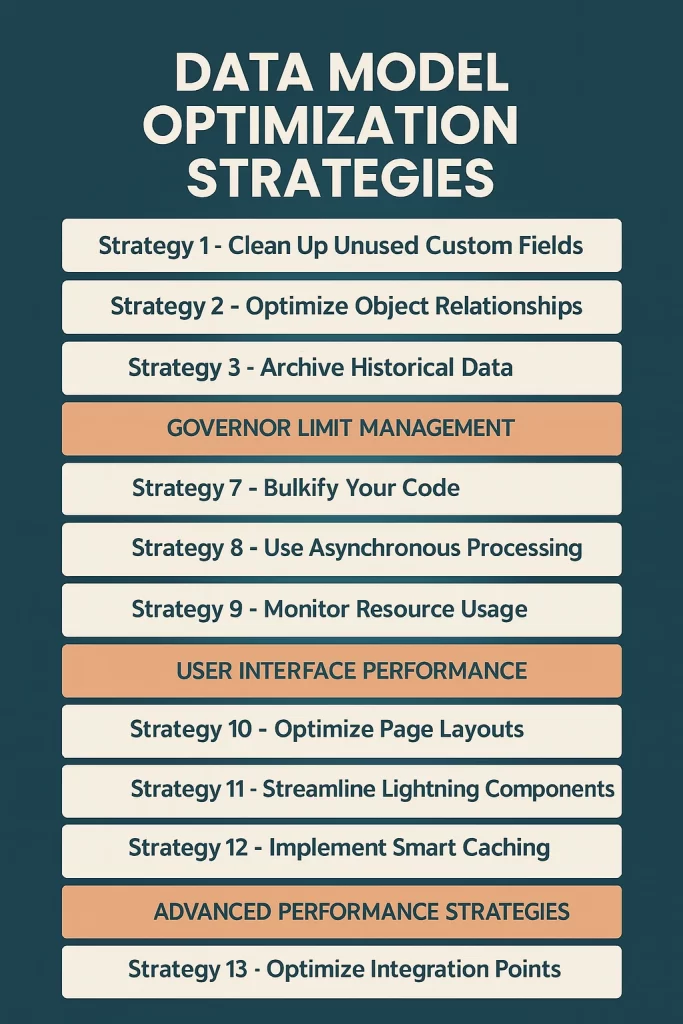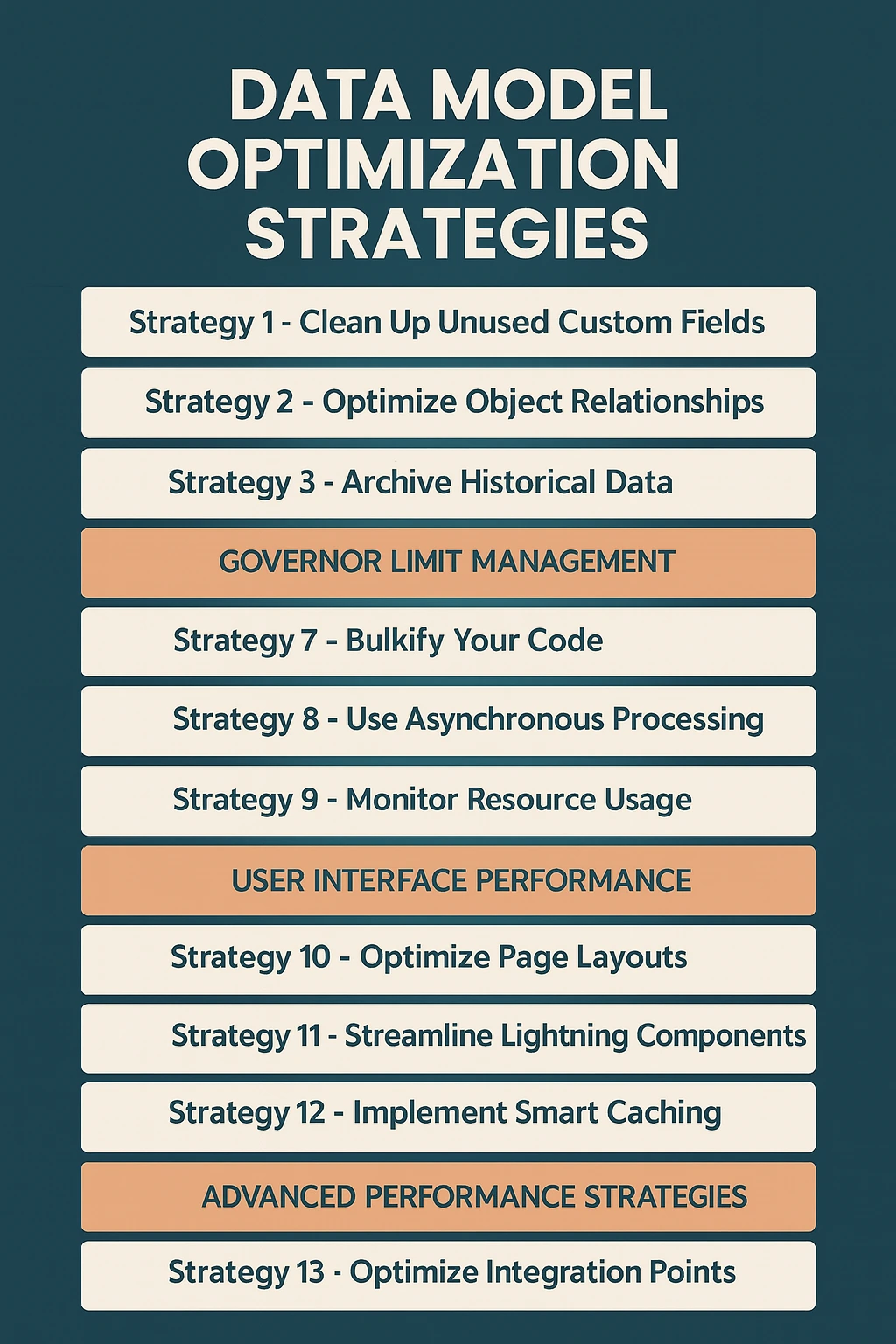Slow Salesforce equals frustrated users and lost productivity.
When your customer experience teams wait for pages to load or deal with timeouts during critical feedback collection moments, you’re not just losing efficiency—you’re potentially losing customers.
Performance issues create ripple effects that impact everything from survey response rates to the speed at which you can act on customer insights. The good news? Most Salesforce performance problems have proven solutions. We’ve compiled 15 battle-tested strategies that will transform your sluggish system into a speed machine.
Why Salesforce Performance Tuning Matters for Your Team
The Real Cost of Slow Performance
Every second your team waits for Salesforce to respond is a second they’re not focused on improving customer experiences. Users abandon tasks when systems take longer than 3 seconds to respond.
Poor performance creates a domino effect. Your customer experience professionals spend more time fighting the system than understanding customer feedback, leading to delayed responses to critical issues.
Performance vs User Experience
Fast systems encourage adoption and engagement. When your customer experience teams can quickly access survey responses and feedback data, they’re more likely to use these insights proactively.
System performance directly impacts your ability to integrate feedback across touchpoints seamlessly. The connection between system speed and decision-making quality is undeniable.
Data Model Optimization Strategies

Strategy 1 – Clean Up Unused Custom Fields
Your Salesforce org probably has dozens of custom fields that seemed important at the time but now just slow things down. Every unused field adds overhead to queries and page loads.
Start by running a field usage report to identify fields that haven’t been accessed in the last 90 days. These are prime candidates for removal or archiving.
Strategy 2 – Optimize Object Relationships
Complex relationship structures can turn simple queries into performance nightmares. Review your lookup and master-detail relationships to ensure they’re still serving their intended purpose.
Too many relationships create query complexity that impacts everything from list views to reports. Sometimes simplifying your data model delivers bigger performance gains than any technical optimization.
Strategy 3 – Archive Historical Data
Old data is like digital clutter—it accumulates over time and slows everything down. Implementing a smart archiving strategy can dramatically improve query performance across your entire org.
Focus on archiving records that are older than your business retention requirements. Most customer feedback data doesn’t need to be instantly accessible after several years.
Query Optimization Techniques
Strategy 4 – Write Efficient SOQL Queries
Bad queries are performance killers. The difference between a well-written and poorly-written SOQL query can be the difference between sub-second response times and 30-second timeouts.
Always use indexed fields in your WHERE clauses when possible. Avoid SELECT * queries and always use LIMIT statements to prevent runaway queries.
Strategy 5 – Leverage Custom Indexes
Sometimes the standard indexed fields aren’t enough for your specific use cases. Custom indexes can dramatically improve query performance for fields you frequently filter on.
Work with Salesforce support to identify fields that would benefit from custom indexing. This is especially valuable for custom fields used in complex reporting or integration scenarios.
Strategy 6 – Implement Skinny Tables
Skinny tables are Salesforce’s secret weapon for organizations with large data volumes. They create optimized copies of frequently-accessed fields that query much faster than standard tables.
The request process requires working with Salesforce support and demonstrating legitimate performance needs. For qualifying organizations, skinny tables can provide 10x query performance improvements.
Governor Limit Management
Strategy 7 – Bulkify Your Code
Governor limits exist for good reason, but they can feel restrictive when you’re trying to process large amounts of customer feedback data. The solution isn’t to fight the limits—it’s to work smarter within them.
Bulkification means writing code that processes multiple records efficiently rather than handling them one at a time. Never put SOQL queries inside loops.
Strategy 8 – Use Asynchronous Processing
Not everything needs to happen immediately. Asynchronous processing lets you handle complex operations in the background while keeping your user interface responsive.
Choose the right tool for each job. Batch Apex excels at processing thousands of records, while Queueable Apex offers more flexibility for complex business logic.
Strategy 9 – Monitor Resource Usage
You can’t optimize what you don’t measure. Implementing proactive governor limit monitoring prevents performance issues before they impact your users.
Set up alerts that trigger when you’re approaching governor limits during peak usage periods. Use the Developer Console and debug logs to understand resource consumption patterns.
User Interface Performance
Strategy 10 – Optimize Page Layouts
Cluttered page layouts don’t just confuse users—they slow down page load times. Every field, related list, and component adds overhead to page rendering.
Review your page layouts with a critical eye. Remove fields that users don’t actually need to see, and organize remaining fields into logical sections.
Strategy 11 – Streamline Lightning Components
Custom Lightning components can enhance user experience, but poorly-designed components can devastate performance. Focus on efficient data binding and minimal server round-trips.
Avoid making unnecessary API calls from your components. Test your components under realistic load conditions.
Strategy 12 – Implement Smart Caching
Caching frequently-accessed data reduces database queries and improves response times. Salesforce offers several caching mechanisms that can dramatically improve performance when used strategically.
Platform Cache provides org-wide and session-based caching for data that doesn’t change frequently. Use it for lookup data, configuration settings, and other relatively static information.
Advanced Performance Strategies
Strategy 13 – Optimize Integration Points
Integrations can be major performance bottlenecks if not designed properly. Efficient integration patterns minimize resource consumption while maintaining data synchronization.
Use bulk operations whenever possible instead of processing records individually. This approach reduces API calls and improves overall system performance.
Strategy 14 – Use Selective Queries
Understanding query selectivity is crucial for optimal performance. Selective queries use indexed fields and filter conditions that return small result sets efficiently.
A query is considered selective when it returns less than 10% of total records in an object. Design your queries to meet this threshold whenever possible.
Strategy 15 – Implement Performance Monitoring
Continuous monitoring is essential for maintaining optimal performance over time. Set up automated monitoring systems that track key performance metrics and alert you to issues.
Use Salesforce’s built-in monitoring tools like the Lightning Usage App to understand how your users interact with the system. This data helps prioritize optimization efforts.
Common Performance Bottlenecks to Avoid
Database-Related Issues
Large data volumes without proper indexing create exponential performance degradation. What works fine with 10,000 records might be unusable with 1 million records.
Inefficient query patterns compound over time as your data grows. A poorly-designed query that runs acceptably today might timeout later without optimization.
Code-Related Problems
Non-bulkified code operations are performance disasters waiting to happen. They work fine in development but fail spectacularly in production with real data volumes.
Excessive SOQL queries within loops violate governor limits and create unpredictable performance. Always collect your data upfront and process it efficiently.
User Interface Slowdowns
Overloaded page layouts with dozens of fields and multiple related lists create slow page loads and confused users. Less is often more when it comes to interface design.
Too many workflow rules firing simultaneously can create cascading performance issues. Review your automation to ensure it’s optimized for performance.
How SurveyVista Optimizes Performance for Customer Feedback
Native Integration Benefits
SurveyVista’s 100% Salesforce-native architecture eliminates the API overhead and sync delays that plague other survey solutions. Your feedback data flows instantly into your existing workflows without performance penalties.
There’s no external system to slow things down or create bottlenecks. Everything happens within your Salesforce org using the same optimized infrastructure that powers your CRM operations.
Efficient Data Collection
Our optimized survey response processing minimizes impact on your system performance while maximizing data collection efficiency. Smart data integration patterns ensure feedback flows seamlessly into your existing processes.
SurveyVista’s architecture leverages Salesforce’s built-in performance optimizations rather than working against them. This approach delivers superior performance compared to external survey tools that require constant data synchronization.
Making Performance Optimization Stick
Salesforce performance optimization isn’t a one-time project—it’s an ongoing commitment to providing your customer experience teams with the tools they need to succeed. The 15 strategies we’ve covered provide a roadmap for transforming your sluggish system into a performance powerhouse.
Start with the optimizations that will provide the biggest impact for your specific use case, then build momentum with quick wins before tackling more complex improvements. Remember that performance optimization directly impacts your ability to collect, integrate, and act on customer feedback effectively.
When your systems run smoothly, your teams can focus on what matters most—understanding and improving customer experiences rather than fighting with slow technology. Start implementing these strategies today, and watch your Salesforce performance—and customer satisfaction—soar.
Frequently Asked Questions
How long does it take to see performance improvements after implementing these strategies?
Most organizations see immediate improvements from simple optimizations like cleaning up unused fields and optimizing page layouts. More complex changes like custom indexes or skinny tables may take 2-4 weeks to implement and show results.
Which performance optimization strategy should I tackle first?
Start with data model cleanup—removing unused custom fields and optimizing page layouts. These changes provide quick wins with minimal risk and help build momentum for more complex optimizations like query tuning and custom indexes.
Can performance tuning affect my existing Salesforce customizations?
Most performance optimizations enhance rather than disrupt existing customizations. However, changes like field removal or relationship modifications should be tested in a sandbox environment first to ensure compatibility with workflows and integrations.
How do I know if my Salesforce org needs performance tuning?
Key warning signs include page load times over 3 seconds, frequent timeouts, user complaints about system slowness, and approaching governor limits. Monitor these metrics regularly to catch performance issues before they impact productivity.
Do these performance strategies work for both Classic and Lightning Experience?
Yes, most strategies apply to both interfaces. However, Lightning-specific optimizations like component streamlining and Lightning Data Service usage provide additional performance benefits for organizations using the modern Salesforce interface.
More Like This

Rajesh Unadkat 
Founder and CEO
Rajesh is the visionary leader at the helm of SurveyVista. With a profound vision for the transformative potential of survey solutions, he founded the company in 2020. Rajesh's unwavering commitment to harnessing the power of data-driven insights has led to SurveyVista's rapid evolution as an industry leader.
Connect with Rajesh on LinkedIn to stay updated on the latest insights into the world of survey solutions for customer and employee experience management.



